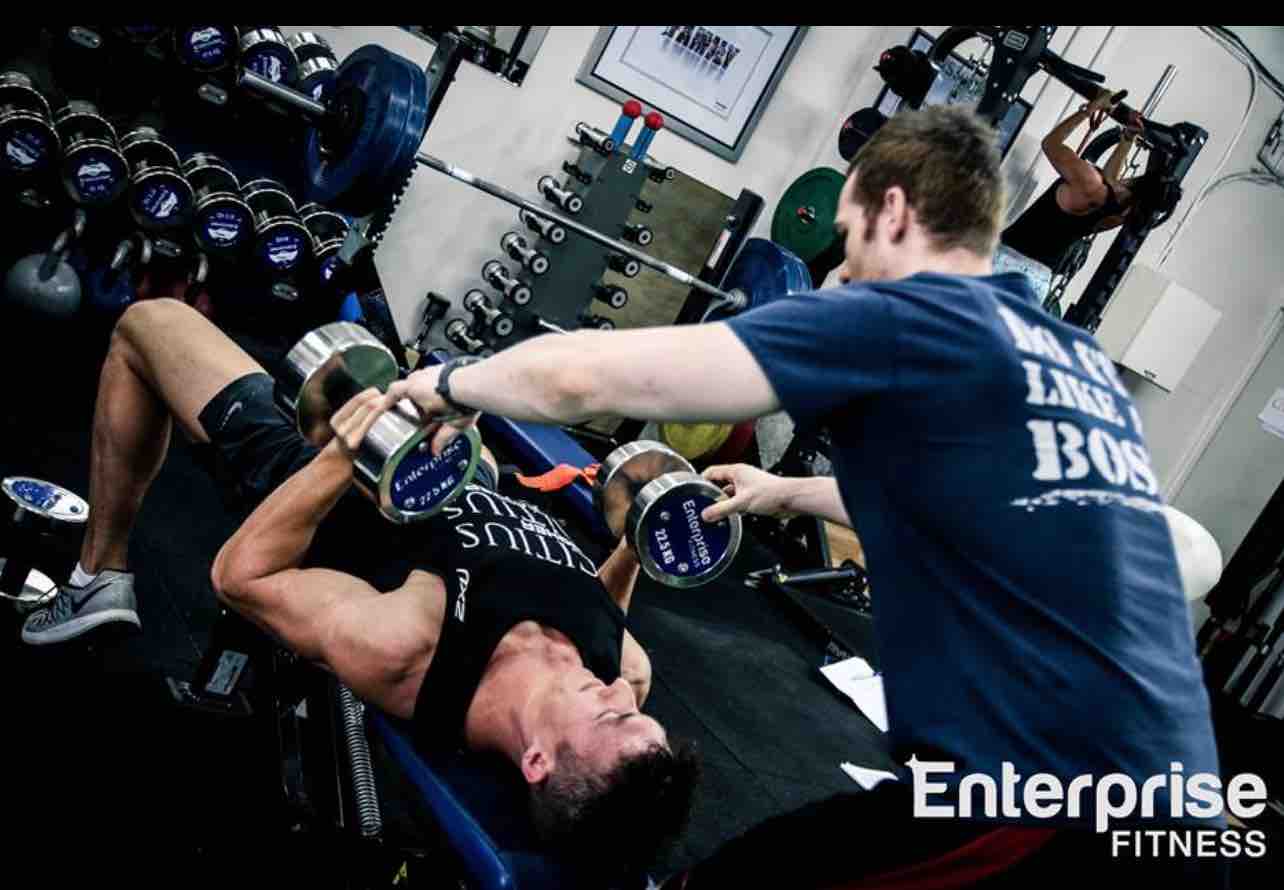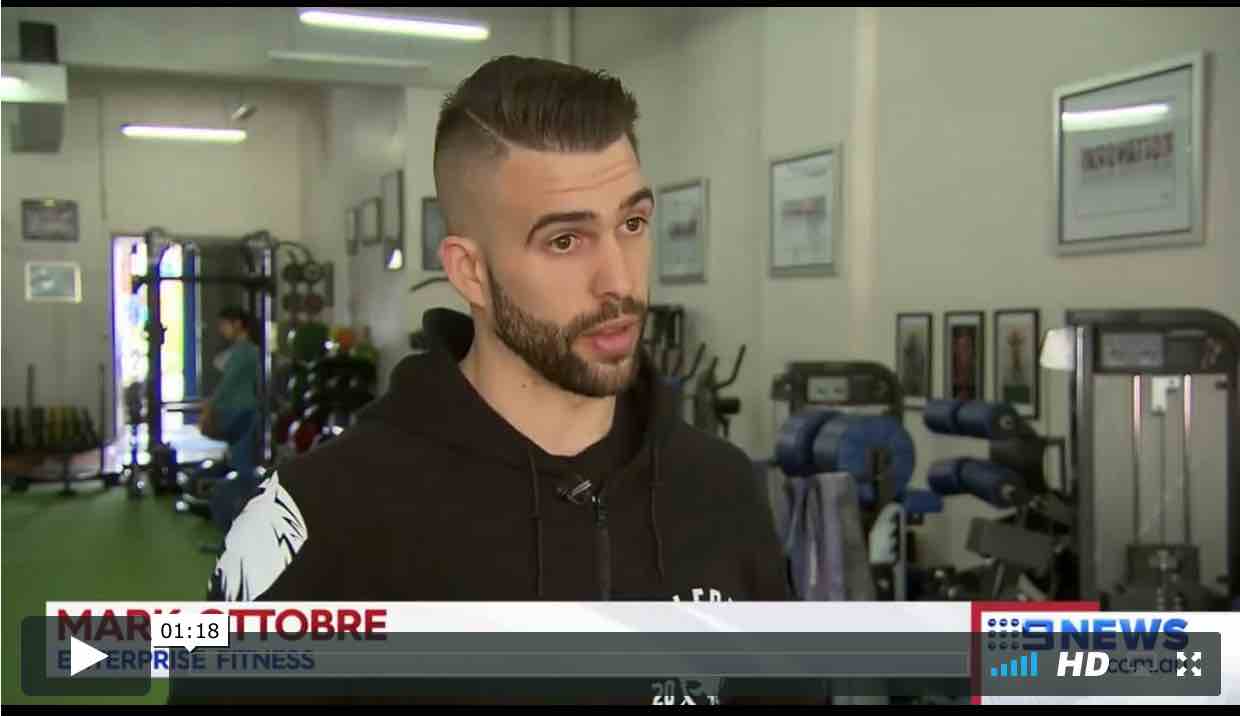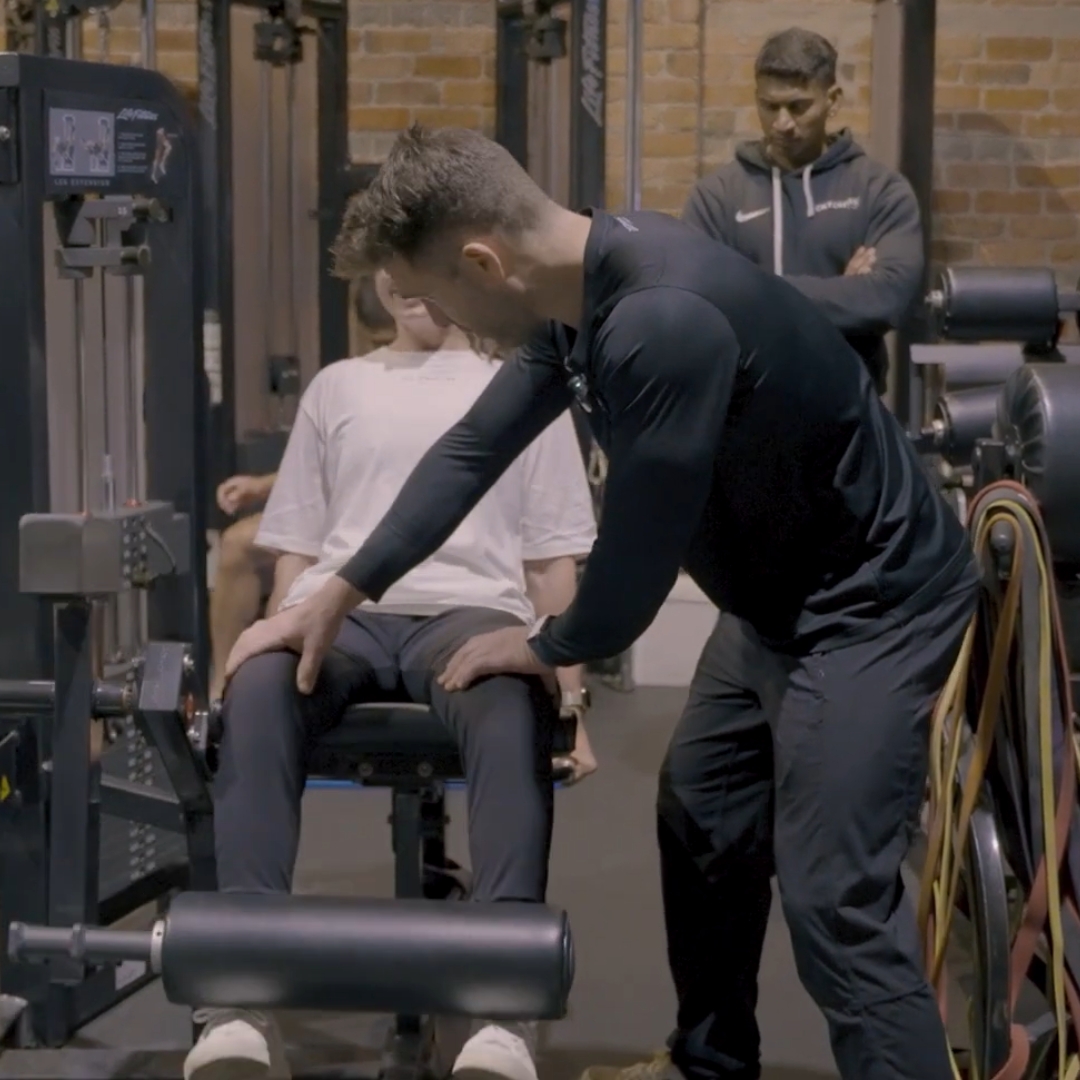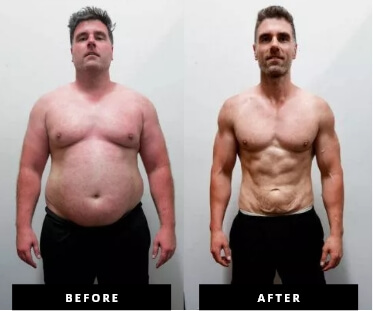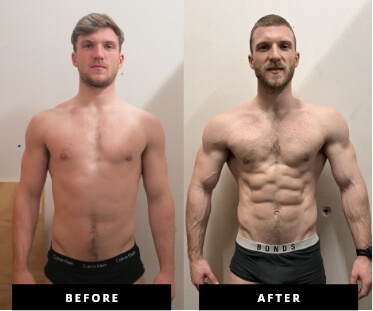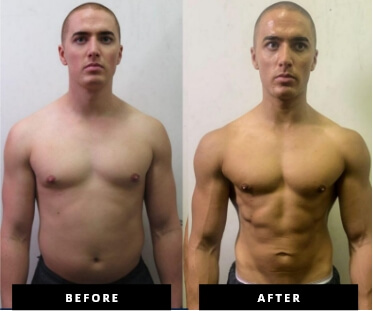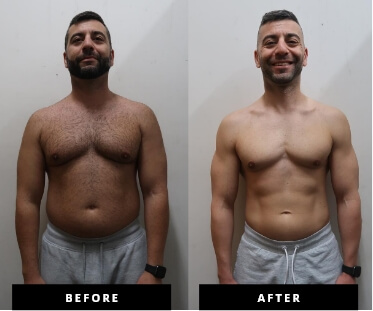Learn how to go from being a GOOD personal trainer to a GREAT personal trainer, by avoiding these top five money-murdering mistakes every personal trainer makes.
Transcript From Top 5 Money Murdering Mistakes Personal Trainers Make
(This transcription may contain errors)
Welcome, folks. My name is Mark Ottobre, and in this video, I’m going to be teaching you as always how to go from being a good personal trainer to a great personal trainer, so I’m going to teach you that. In this video, we’re going to be discussing the top five money-murdering mistakes every personal trainer makes, including myself, and how to avoid them.
Mistake #1: Packaging
Now, what do I mean by packages? They come in and someone says, “Hey, how much do you charge for personal training?” They’ll say they’re right, say 50 bucks an hour, 50 bucks a session, $45 for half-hour. $80 for full hour. Boring. Wrong. Incorrect.
Number one, you’re incorrect because you don’t want to give your hourly fee just like that because people aren’t ready to buy. That’s called window shopping. How often you see a price tag in Louis Vuitton? Well, you don’t see price tags in Louis Vuitton. You don’t see price tags in Louis Vuitton until you’re ready to purchase, so my question for you folks is, do you want to charge like Louis Vuitton, or do you want to charge like Kmart?
Kmart make a lot less money than Louis Vuitton, and you need to have good margins on your product, especially in the service-based industry because you might be saying, “I want to be cheap and affordable to everyone.” Well, good luck making money that way. The only way you’re going to make money that way is to have super high volume and to do groups. If you are interested in being a highly successful one-on-one trainer, keep watching. Your rates need to be high and the way you position it and work with clients needs to be correct.
In saying that, packages are quintessential for your success. The way I package, and I teach my trainers and students the package, is in 12 weeks, so you do once a week, twice a week, three times a week, and four times a week. For example, if someone says, “How much is it for a personal training session?” I say, “Well, that really depends upon your goals and your needs. The first step is to have a sit-down with you and actually see if my services are appropriate with you because unlike every other personal trainer, I give a damn, and the way I structure things is highly specific, and I need to make sure it’s a fit for you as well it’s a fit for me and the way I do business.”
I don’t give out rates just like that because I want to make sure that I’m selling and presenting a correct option to the person. This person might need four times a week, and if I just say how much is it, well, they’re not going to buy four times a week. They’re going to buy what they think, and people do business on my terms because I know what they need. I’m the expert.
2 Things You Need To Have When You Sell And Market:
- Empathy, and
- Authority
When you sell and you market, you want to sell with empathy and authority. I’m going to say that again because it’s crucial. Empathy and authority. I have empathy for my client. I understand what they’re going through, what their needs are, and all the challenges that present them on their day-to-day life, but I’m also the goddamn authority in terms of solving it, and I don’t make any apologies for that.
Someone comes in and they need a lot of help, “You need four times a week.” “Oh, I can only afford once.” “Okay. Well, that’s not going to cut it. I can’t work with you with once because you’re going to walk away very …” It’s a client that you don’t get results, and for the purposes of this, I’d rather not accept you now. I’d rather you save up the money, come back. I’ll give you some tips. I’ve got some free videos online that you can look up. Go get some results using that, and come back. Save up the money, and let’s work together properly because this is the way I want to work with you. At very least, I need three times a week. I’ll say that to clients, and you need to start saying that to clients.
Top five murdering mistakes is packages. You need to create packages. The way you do packages … In the Wolfpack member site, I’ve got four videos. I’m going to briefly discuss it now. On packaging, basically, you need to figure out your minimum rate per hour. Let’s say it’s a hundred bucks, and then from a hundred bucks, you need to add … That’s your four-time session a week rate.
Your minimum rate, let’s say, is a hundred bucks. That’s what you want to earn per hour. Then, you got to go, “All right. If that’s what I’m charging four times a week, for once a week, I need to charge a 20% to 40% premium on that,” because you got to understand that it’s the same amount of work. You still got to do program, and you still got to do nutrition. You still got to get back to the client emails. All those kind of things.
People might be thinking, “Geez, I got to charge a lot more than I’m charging currently.” Yes, absolutely. For the folks who have studios, I’m going to say it right now. Unless you’re charging a minimum of $100 a session and for the group session folks or the semi-private, unless you’re intaking a minimum of $100 a session per hour on that, you’ve got almost zero margin to make any profits from that in terms of wages, taxes, superannuation, and expenses, so your rates do need to be high because how are you going to grow your business otherwise? There needs to be profit. There needs to be margin to scale because folks, you might be watching this and have some stuff on money.
Let me just tell you. If you don’t make money from your business, you’re going to burn out. Absolutely. Fact, right? That’s another mistake. We’ll call that mistake number two, not charging enough. I’ve got it on here. Actually, that is mistake number five, but let’s go to it now. All right?
Mistake #2: Not Charging Enough
All of personal trainers deal with burnout … If I said to you now, “I’ll pay you a thousand bucks for you to train me,” and you might be going out for 50 bucks. I’ll say, “I’ll give you $25,” and your current rate is $100. How motivated are you going to be to train? Well, you’re not. All right? You might be motivated because it’s me, but let’s just say it’s an average client, right, and they say, “Your rate is a hundred bucks,” and they say, “I’m going to give you 50 bucks an hour.” You take it at 50 bucks. They negotiated with you, and now you’re training that client at 50 bucks an hour.
Well, you’re going to get very unmotivated very fast. This is just human nature because you’re not being paid your worth. On the flip side, if that same client says, “Your rate is a hundred bucks. I’m going to give you a thousand bucks to train me.” Well, I can guarantee you a couple things are going to happen. You’re going to value yourself more, you’re going to value the session more, and you’re going to be there early. You’re going to probably stay later. You’re going to do extra. You’re going to offer them extra services because you feel valued.
Money, in a sense, creates an inertia. The more money you have, the more inertia you’re going to have towards creating money, which means that you need to … As you earn money, as you develop wealth, you need to increase your prices because for a lack of a better word or whatever it is, it’s going to keep you motivated. Not to say that people are solely motivated by money, but building wealth, building health, building anything, once you get closer to your goal, there is an inbuilt inertia, which means that you’re why and your goal needs to become bigger and your reward needs to become more satisfying, so you can’t just simply keep your rates for the end of time. It’s not going to work. You’re going to burn out. Your sessions and your performance are going to decrease.
In a world where I think most people are searching for growth, you need someone like me to bust you out of your minimal thinking, and challenge you and say, “No, this is the way it is. You need to review your pricing every quarter to at least every six months and make sure you’re pushing forward.” Again, if you’re looking at employing staff or maybe you have staff already, that has to marginated. Otherwise, you’re not going to make any money. Right? You’re not going to make any profit and making money does not make you a bad person.
There are lawyers who battle and go to court for people who are murders and rapists charging $500 to $1,000 an hour. Now, you’re helping people. You’re a personal trainer. You’re changing people’s lives, and you’re in your own head about charging for that. Get over yourself. Yeah? Value yourself, and I’ve got a whole exercise in Wolfpack about valuing yourself. If you don’t value yourself, do more fucking courses. I know a good one. Wolfpack. Four times a year, I’ll be kicking your ass and making sure you do value yourself, but not just value yourself, this full self-esteem that you somehow have earned.
No, no. You got to do the fucking work. Right? You got to show up to the courses, learn nutrition, study, do the online study, and when someone asks you a question, let’s say it’s about gluten, you have an answer. Gluten is found wheat rye in Bali. There’s over 60 different peptides of gluten, but only three of them are really toxic. But anyway, you have some tangible knowledge about topics that are going to help people get better results. That’s what you need.
Mistake #3: Not Having a Savers Plan
I don’t see personal trainers saving. Now, in any business, if you’re going to create a stable base in which you can springboard to success and if you look at say, for example, the biggest companies in the world, they all have capital in their business.
Now, in building a personal training business, in any business, you need to build capital because it’s going to stabilize your emotions. It’s going to stabilize your mindset. What do I mean by capital? You want to have roughly … Well, not roughly. Pretty much exactly or over three months worth of income saved in your bank account. I’ll say that again. If you’re earning 5 grand a month, you want to have 15 grand of savings in your bank account. If you’re earning 10 grand a month, you got it. You want to have 30 grand of saving in your bank account.
Liquid capital, so that if that fucker client comes across and says, “Hey, I want a discount,” go, “No, I don’t give discounts.” “Oh, but I really want one.” They argue, “Blah, blah, blah.” If you’re in a desperate place, you might be feeling stupid and give him a discount. That’s psychological money. It’s breathing room. You don’t touch that. You keep adding to it and you push it.
I like to get trainers to create a daily savings plan because when you break it down a daily savings plan, it’s, “How much money do I need to earn today to satisfy that and to live from?” rather than a monthly saving plan because it’s pushed out somewhere in the future. With a daily savings plan, you’re looking at your finances from a day-to-day basis, so very, very simple.
If you’re already saving monthly, let’s say you’re saving 200 bucks monthly, divide it by 30. That’s your daily savings plan. With banking apps and those kinds of thing, it’s very, very simple to set these strategies up, and a savings plan is two things. It’s not emotional, and it’s automatic. If it’s not those two things, you don’t have a savings plan. If you say to me, “I save. I do it manually every month,” that’s not a savings plan. Right? That requires your emotional effort to do it, and one month, you will forget. Nonemotional. Automatic. It must be those two things.
Mistake #4: Offering Discounts
People say, “Do discount.” You know what I say to that? I say, “I didn’t realize we’re in Bali.” Yeah? We’re not in Bali. Does Ferrari discount? No. Does Louis Vuitton discount? No. It devalues your product. Yeah? You don’t discount. You offer packages. You offer services. You can add value. Say, “Look, you are a great client. What I’ll do for you is I’ll give you an extra session, but there’s no discount and such.” You value-add. Don’t discount. Okay? Because if you do it for one person, guess what? You’re going to have to with everyone else. That’s why there are no discounts. Have your rates. Have your set rates.
If you’ve got a PT studio like myself and you’ve got staff, you might have a staff rate. You might have a family rate, so if family come on, it’s not, “Oh, this family member gets X, and this family gets X.” No, there is the family rate. There is the staff rate. Here our other rates for public. Okay? You got to set your rates in every area and stick to them.
If someone like, say, family comes in, it’s like, “Ugh.” You don’t want to discount. “Here’s the family rate.” “Uh, do you have a discount?” “No, and I think you heard what I said. This is the family rate. Yeah? I can give you the normal rate, but this is the family rate. Which rate do you want?” Right? These are your rates. Be solid. Be rock solid. If people present, again, you never discount. You can add value, but never discount.
Mistake #5: Taking Cash Payments
I’m guessing most of you watching this want to create some degree of wealth in your life. You’re not going to do it just with cash in hand. It’s just not going to happen. Right? You’re not a drug dealer. Okay? You’re a personal trainer. You’re a professional. You need to have the ability to take credit cards, and also, you don’t want electronic fund transfers coming into your bank account because electronic trust funds … Even though you can with some clients, it’s inefficient, and it’s ineffective, and it also requires the person to transfer, which they don’t always do and they don’t always do in a timely manner.
At our business, in my business, I learned very quickly that the best way to do business is with credit card, getting people’s credit card details, so you can use like eWAY, Stripe, or Foursquare. There’s a bunch of different places you can go with the ability that … Apple Pay that set you up pretty easily to be able to take credit cards, so you want the ability to do that, the ability to take credit cards because then, you can do it in real-time. You get the bank in real time, and that means you’re going to pay tax.
That’s not all bad because one day, you probably want to buy a home. You want to buy a house. Maybe you want a business loan. Maybe you want to actually invest in property. Yeah. If you’re just constantly getting cash in the bank, you’re not going to show any earnings. You’re not going to show any income. The banks are going to look at your income and say, “You’re earning $20,000 a year. How could we possibly give you a loan?” even though you’re really earning a lot more in cash that you don’t claim.
Folks, if you want to build a business, you need to start declaring your income and get … Professional people don’t always pay in cash. Professional people pay with credit card, particularly like American Express, so you need the ability to take credit cards, and it’s not just a cash business. You’re not going to grow just a cash business. It’s not going to work. You can’t scale just a cash business. Okay? You’re not a drug dealer. You’re professional. You’re a personal trainer. You need the ability to take credit cards.
Finally, rates too low, which I already covered. Yeah? If your rates are too low now … I generally recommend for my students that if they are going to hire a staff, their staff’s rate needs to be a minimum of $100 an hour for there to be any real marginal profit in it, and that goes for IBOs, Independent Business Owners, say Fitness First or people working in studios.
That means that your rates probably need to be at $150 an hour, but your staff’s rates need to be at around $100 an hour. I might say minimum $90, right? Four times a week, but unless there’s that regularity of transaction, meaning they’re training with you four times a week, then you can probably justify it because there’s more renewable income.
Whereas if they’re training with you once a week at $90 an hour, it just doesn’t cut it. It’s not enough margin on it because, again, by the time you’ve paid wages … and the minimum wage for a personal trainer, if you’re employing them casually, is about $28 an hour. Okay?
The thing is you want to have scale in that. Meaning, that the more sessions they do, the more we can pay them. The better they get, the more we can pay them. Let’s say now you’re paying them around $45 an hour. Let’s just call it $50. Call it 50% even, right, which is probably a little bit too much when you factor in, say, superannuation, when you factor in taxes, when you factor in expenses, and when you look at all this stuff, especially in say an IBO gym.
If you’re charging $300 a week, if you’re being charged $300 a week by, let’s say, Fitness First, that means for the session to be $10 per session in terms of expenses, that training needs to be doing $30 sessions a week for it to justify $10, which means if you’re charging $100, well, now, already $90 of it is gone. Then, you take wages out. Then, you’ve got superannuation. Et cetera, et cetera, et cetera.
You need to make sure that there’s enough money in there to support the margins of a scalable business. Otherwise, you’re going to look at it and go, “Well, I might as well just have increased my prices by 10 bucks and being done with it because staff management is a whole other situation.”
Folks, I hope you’ve enjoyed this one. Avoid these money-murdering mistakes. Till next time. Train hard, [inaudible 00:14:29] smart, and eat well, and if you’ve got a question about Wolfpack, shoot us an email. Speak soon.
Related Posts
